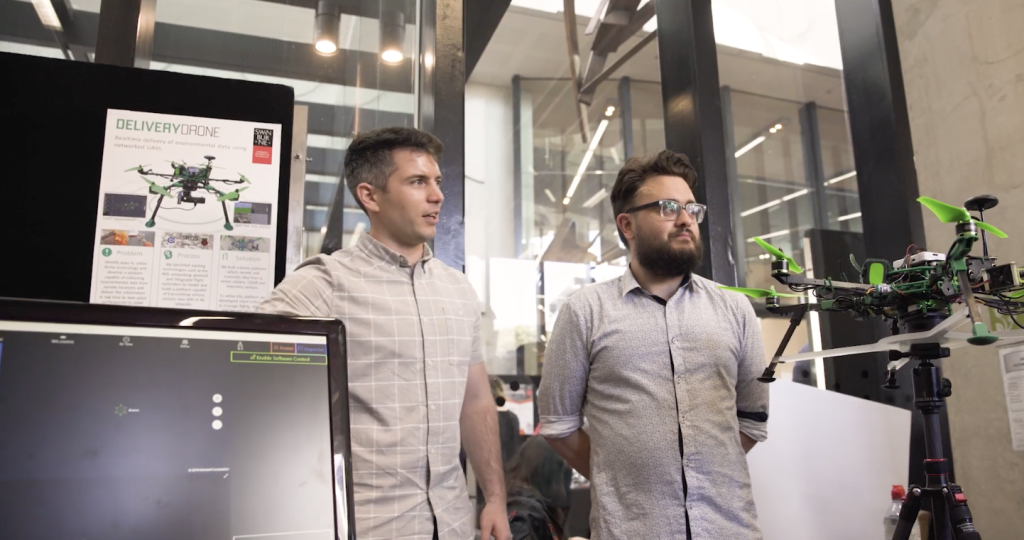Through a new industry partnership program with Swinburne University of Technology, engineers are gaining access to the next generation of talent and out-of-the-box thinking to solve real-world problems.
How can engineers design a sustainable house that can quickly be deployed in an emergency?
This was the challenge put to students at Swinburne as part of the university’s Work Integrated Learning (WIL) Spine – a series of scaffolded units that engineering students are required to undertake as part of their Bachelor of Engineering (Honours). Each semester students work on an industry-linked project for one of Swinburne’s industry partners.
“The students are working on a real-world problem and navigating challenges such as, ‘How do you balance the cost and time for construction with achieving sustainable outcomes?,” says Jennifer Turner, Undergraduate WIL Spine Coordinator and Engineer in Residence at Swinburne’s School of Engineering.
“The projects allow our students to put theory into practice and develop the skills they’ll need in their future careers.
“One of our main reasons for introducing the WIL Spine last year was to give students an appreciation of the complexities of real-world practice and get them involved in challenges they’ll encounter when they start their careers.”
Jabin Group, who was already working on this project when they put the challenge to Swinburne students, was looking for some out-of-the-box ideas.
How the industry partnership works
There are no exams in Swinburne’s WIL Spine, but student grades are instead calculated from real-world assessments.
“These are based around the outcomes that our industry partners want to see, as well as the type of technology the students are using and their ability to apply it to the project.”
For industry partners, the opportunity is granting them access to a pipeline of next generation talent.
“That’s one of the main reasons that industry bodies want to work with us. A lot of them also enjoy the process of giving back and supporting student learning,” says Turner.
“It allows industry professionals to take up leadership opportunities and that often fits with their own professional development plans.”
Industry bodies interested in engaging with Swinburne for the WIL Spine, or looking to pursue other partnership opportunities, can submit an enquiry form.
“Once we’ve received the enquiry form and have made the initial connection, one of our academic staff will sit down with the industry partner to run an initial workshop to determine their potential projects and how they might align with some of our units,” says Turner.
“The process from there is really dependent on the industry partner and how involved they want to be in the program.”
In a typical engagement, the industry partner will co-design a project with Swinburne’s academic staff and then have one or two contact points throughout the semester.
“For example, they might come in at the start of the semester and introduce the project to the students,” says Turner. “Then they might come back midway through the semester to give feedback on the student’s project and provide some mentoring and guidance, and at the end of the semester they might return again to see the end outcome and project from the students.”
But the partnership isn’t a one-size-fits all approach.
One of the factors that Turner likes best about the WIL Spine – and Swinburne’s partnerships with industry bodies in general – is their flexible nature.
“It isn’t a rigid process. It’s about figuring out what works best for our industry partners, finding where the alignment is, and then forming a partnership around that. The collaborative approach can lead to some fantastic outcomes for everyone involved.”
The students’ journeys
In the final year of their engineering degree, students present their projects at a showcase and talk about their involvement with industry.
Hear from students in the video below about some of the exciting projects they’ve worked on.
Seeing the culmination of the students’ work, as well as helping the students develop their projects, are highlights for Turner.
“It’s also really rewarding to see how the students’ levels of confidence develop. Some of them have said they never thought they’d be able to present in front of industry and they’re so proud of themselves once they’ve accomplished that. It’s really great to see the boost in their confidence.”
The opportunity also gives students greater exposure to a range of industries and projects.
“The engineering sector is so wonderfully diverse and broad,” says Turner. “There are so many different career paths that students can follow these days, but for a university student who hasn’t had exposure to the breadth of engineering before, it can be difficult for them to determine what career path they’re most passionate about.”
By providing the students with exposure to a range of industry partners and industry projects, they are able to find out what they’re interested in and discover their own passions, and that can then help inform their career path and what choices that they make in the future.
Find out more about industry partnership opportunities with Swinburne.

